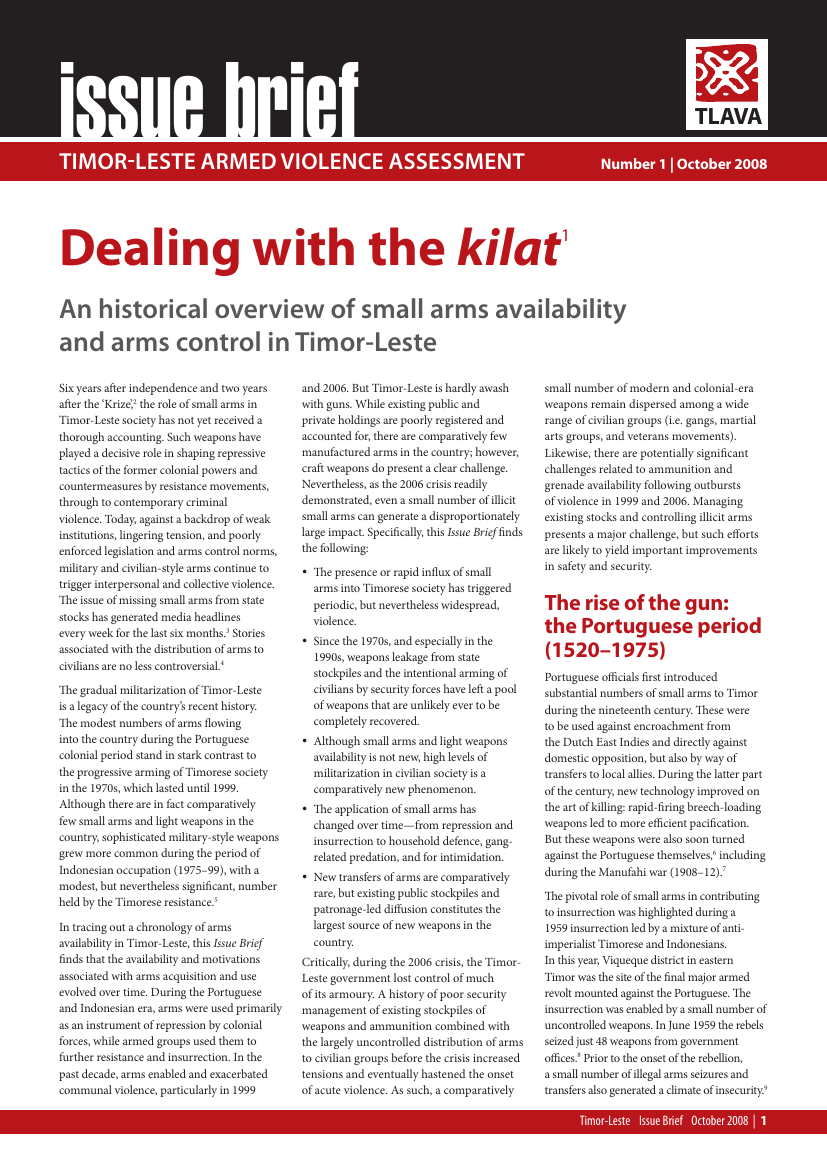
Dealing with the kilat: An historical overview of small arms availability and arms control in Timor-Leste (TLAVA Issue Brief 1)
Six years after independence and two years after the ‘Krize’, the role of small arms in Timor-Leste society has not yet received a thorough accounting. Such weapons have played a decisive role in shaping repressive tactics of the former colonial powers and countermeasures by resistance movements, through to contemporary criminal violence. Today, against a backdrop of weak institutions, lingering tension, and poorly enforced legislation and arms control norms, military and civilian-style arms continue to trigger interpersonal and collective violence. The issue of missing small arms from state stocks has generated media headlines every week for the last six months. Stories associated with the distribution of arms to civilians are no less controversial.
The gradual militarization of Timor-Leste is a legacy of the country’s recent history. The modest numbers of arms flowing into the country during the Portuguese colonial period stand in stark contrast to the progressive arming of Timorese society in the 1970s, which lasted until 1999. Although there are in fact comparatively few small arms and light weapons in the country, sophisticated military-style weapons grew more common during the period of Indonesian occupation (1975–99), with a modest, but nevertheless significant, number held by the Timorese resistance.
In tracing out a chronology of arms availability in Timor-Leste, Dealing with the kilat An historical overview of small arms availability and arms control in Timor-Leste, finds that the availability and motivations associated with arms acquisition and use evolved over time. During the Portuguese and Indonesian era, arms were used primarily as an instrument of repression by colonial forces, while armed groups used them to further resistance and insurrection. In the past decade, arms enabled and exacerbated communal violence, particularly in 1999 and 2006. But Timor-Leste is hardly awash with guns. While existing public and private holdings are poorly registered and accounted for, there are comparatively few manufactured arms in the country; however, craft weapons do present a clear challenge. Nevertheless, as the 2006 crisis readily demonstrated, even a small number of illicit small arms can generate a disproportionately large impact.
Also available in INDONESIAN, PORTUGUESE, and TETUM.
Have your say about Small Arms Survey publications and products: take 5 minutes to fill out our questionnaire.